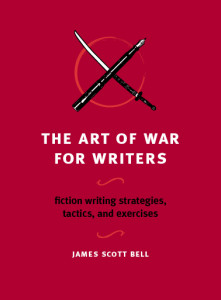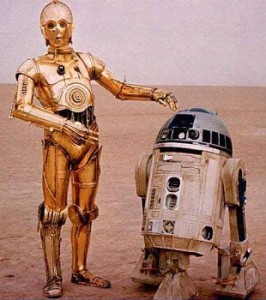
by James Scott Bell
It’s shameless self-promotion day here at TKZ.
This week my third how-to book for Writers Digest releases. It’s called The Art of War for Writers and I think, in my own unbiased fashion, that it’s going to help a ton of writers, not only those fighting the battle get published, but also those who want to stay published.
But more on that in a bit. In order to keep this from being completely self-referential, I feel a need to say something in defense of how-to-write books.
Every now and again I hear some author putting down how-tos. “You can only learn to write by writing,” they’ll say. “Don’t waste your time studying writing books. Just put a page in front of you and write!”
Which strikes me as making as much sense as saying, “You can only learn to do brain surgery by doing brain surgery. Don’t waste your time studying brain surgery. Just cut open heads and go!”
Uh-huh. Excuse me if I show a preference for a sawbones who has studied under the tutelage of experienced surgeons.
Another trope is, “No one ever learned to write by reading about writing.” Really? Isn’t that a bit cheeky, unless you’ve interviewed every published writer out there?
The writer I know best – me – absolutely learned to write by reading how-tos. I had been fed the bunk that “writers are born, not made” while in college, and I bought it, in part because I took a course from Raymond Carver and couldn’t do what he did. (I didn’t know at the time that there was more than one way to “do” fiction. I thought everybody had to pass through the same tunnel.)
When I finally decided I had to try to learn to write, even if I never got published, I went after it with a club. I started gathering books on writing, read Writers Digest religiously (especially Lawrence Block’s fiction column), took some classes, and wrote every day. Living in L.A. it was required that I try screenwriting first, so I wrote four complete screenplays in one year, giving them to a film school friend, who patiently read them and told me they weren’t working. But he didn’t know why.
Then one day I read a chapter in a book by the great writing teacher Jack Bickham. And I had an epiphany. Literally. Light bulbs and fireworks went off inside my head, and I finally got it. Or at least a big part of it.
So I wrote another screenplay, and that was the one that my friend liked. The next one I wrote got optioned, and the one after that got me into one of the top agencies in town.
All because I finally got it from a how-to book.
That’s not to say I might not have gotten it some other way (like trial and error over ten years), but at the very least this saved me time. And that’s the reason I write my how-to books – to save writers time, and give them the nuts and bolts they need to make it in this racket. I want to write the sort of books I was looking for when I was wandering in the darkness.
“But you cannot learn to write fiction. . .”
So how did the writers of the past learn? Many of them had a great editor, like Max Perkins. Some had an older writer who read their stuff and suggested ways to make it better. Some, like the great writer-director Preston Sturges, learned from the how-to books available in his day. (In Sturges’s case, it was the books of Brander Matthews.)
So a good how-to book is like an editor or teacher. Is there not some value in that?
Now it is quite true you can’t just read how-tos and get better without practice. You have to write every day, and apply what you’re learning. But if you write blindly, without correction and education, you’re most likely going to be turning wheels like that rodent in the cage. A lot of effort but getting nowhere.
I am a firm believer in how-to books, and write them because I want to give back something to the craft I love. I know they’ve helped writers get published. Here’s one testimonial from NPR.
Now the publisher’s blurb about The Art of War for Writers:
Successfully starting and finishing a publishable novel is often like fighting a series of battles – against the page, against one’s own self-doubt, against rebellious characters, etc. Featuring timeless, innovative, and concise writing strategies and focused exercises, this book is the ultimate battle plan and more – it’s Sun Tzu’s “The Art of War” for novelists. Tactics and exercises are provided on idea generation and development, character building, plotting, drafting, querying and submitting, dealing with rejection, coping with envy and unrealistic expectations, and much more.
So what about you? Have you ever been helped by a how-to book on writing? Or do you consider them a waste of time?








